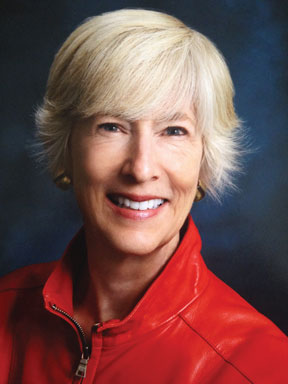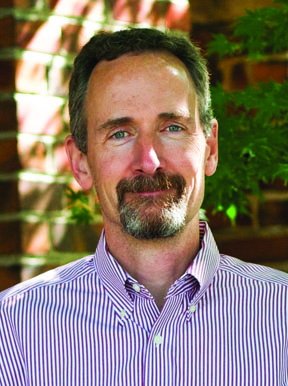
In the 2009 movie Up in the Air, George Clooney's character is a hired gun brought in to fire employees at companies that need downsizing — a tough job he can easily do because of his temporary status with the organization, not to mention his commitment-phobic personality.
This negative stereotype can plague interim CEOs and other administrators, including seminary presidents, who are seen either as placeholders (at best) or as vicious house-cleaners (at worst). Too often interims are only considered in emergencies, when there’s an unexpected vacancy at the top.
But interim or “acting” presidents (and occasionally other administrators) can be valuable to a seminary, offering stability and continuity, achieving specific — often financial — goals, and providing time to reexamine mission and vision while searching for the most appropriate permanent leader.
The use of interims is an increasing trend in higher education, says Bryan E. Carlson, president and CEO of Collegiate Enterprise Solutions (CES), which also includes the Registry for College and University Presidents, an interim placement service. The registry has grown from a “lower-key” operation a decade ago to one that made more than 125 placements in 2013.
 |
| Kita McVay |
“Higher education in general is facing unprecedented challenges, and interims can be brought in to face these very challenging circumstances,” says Carlson. “Because they are highly experienced and not candidates for the permanent position, interims are able to focus more exclusively on the task at hand, without being distracted by cultivating political relationships for the purpose of job security.”
In other words, interim leadership has the freedom to make significant and sometimes difficult decisions, usually about financial issues such as expanding revenue, cutting expenses, or even forging new educational models or alternative futures for institutions. “Often interims address issues and challenges that make the appointment and tenure of the permanent president, once he or she comes in, much easier,” says Carlson.
That was the case at United Theological Seminary of the Twin Cities, where Kita McVay served as interim president for three years. The board had conducted a national search after the retirement of long-term and beloved President Wilson Yates, but the new president only lasted a few months. The seminary was facing not only some financial issues, but also emotional distress over the failed presidency.
“The board needed to reassess, and to start over immediately would have been very draining and counterproductive,” says McVay, a former board chair for the seminary, which is affiliated with the United Church of Christ. “There was quite a bit of work to do, and I was game for it.”
Given the emergency situation, United did not consider an external interim president but instead chose McVay, who offered familiarity with the institution (15 years on the board as well as a degree from the seminary) plus experience in banking and business.
“United needed to get its financial health in order,” recalls McVay. “A big part of my assignment was to stabilize income and expenses so we would have a stronger institution for the next president to step into. Those were business-centered functions I was pretty comfortable with.”
As a person so obviously committed to the institution, McVay also provided a calm, reassuring presence during an anxious time at the school. “It was really helpful that the board was able to say, ‘We have it under control.’ People didn't have to worry,” she says. Although the president who followed McVay did not stay long because of serious health problems, current President Barbara A. Holmes has been “going great guns” since she was hired in 2012, says McVay.
Transformational change
 |
| Peg Birk |
Although internal interims have the advantage of familiarity, external interims can provide fresh eyes to an organization ready for change. “Having an interim is really a unique opportunity in the life of an organization,” says Peg Birk, president and CEO of Interim Solutions in Minneapolis. Birk has served as interim president of the McKnight Foundation, the National Council of Churches, and the Forum for Theological Exploration (formerly the Fund for Theological Education).
“The conditions of an organization in transition are really optimum for transformational change,” says Birk. “You can really create a sense of ‘we’re in this together’ and accomplish a lot during an interim time.”
Of course, some stakeholders may be fearful or suspicious of interim leaders. “People don’t like uncertainty,” Birk admits, “and there can be human pain in changing an organization.”
That’s why transparency and trust are important, she says. “I try to communicate regularly about what’s going on. The key is to create a healthy sense of urgency and opportunity, while letting them know everyone is going to be treated fairly by the organization, regardless of the outcome.”
Serving as an interim has its challenges for the interim, too. It requires fortitude and nimbleness, especially if the person is not familiar with the organization or its context.
“The hardest part is living with the uncertainty of what’s next and the emotional detachment necessary when a job ends,” Birk says. “I imagine it’s like being a foster parent. You take in a child; get him or her all happy, healthy, and thriving; and then you have to let go. The letting go can be hard sometimes.”
Although it can be tempting, Birk chooses not to transition from interim into a permanent position, even though boards often want to consider her. “When you’re there on a permanent basis, you don’t have the freedom to make significant changes,” she says.
Similarly, Birk suggests that it may be difficult for interims who have previously served on the organization’s board — as she did for the McKnight Foundation — to return to the board after an interim position, as it may be difficult to oversee a new leader after recently serving in the position.
For successful interim leadership, a board must clarify expectations as well as the time frame in which the goals should be accomplished. “It’s good to have a healthy and realistic sense of urgency, but not panic,” Birk says.
A term of 12 to 18 months is usually ideal, she says. “People get weary from interims. It’s a stressful, fast-paced time. It may be the ‘new normal,’ but it’s not a permanent normal.”
That said, Birk suggests all boards at least consider interim leadership when faced with an unplanned vacancy. “It’s important to decide if the organization would benefit from having what I call a pause,” especially after an unexpected departure, she says.
But even if the vacancy was planned, the organization should ask itself if they need a break between permanent leaders. Birk suggests the following questions: “Do we need time to look at our mission, vision, and values? Are there governance issues that would best be resolved by an outside consultant before a new person is brought in? Are there organizational pathologies or elephants in the room that someone from the outside could help us maneuver through?”
Intentional interims
The idea of an interim leader is not foreign to many religious folks, since a number of Protestant denominations actually require interims following the retirement of a long-term pastor. Some seminarians even choose a vocational path specializing in interim pastoring.
“There’s long been a theory that a strong minister can’t immediately be replaced by another strong minister,” says Julien Phillips, president of the board of the Pacific School of Religion (PSR) in Berkeley, California, and a former management consultant with McKinsey & Company.
 |
| Bernard Schlager |
Phillips notes that not only will a congregation likely reject a new minister because it hasn't yet grieved the loss of the former one, but an interim is better equipped to help the congregation see it may need something different in the future than it has had in the past.
Since the retirement of its 14-year president, William McKinney, in 2010, PSR has had three temporary leaders. Dr. Riess Potterveld, former president of Lancaster Theological Seminary in Pennsylvania, led both belt-tightening and new program development during what ended up as a three-year term.
Looking to shore up a long-term visioning process before hiring a permanent president, the PSR board hired prominent UCC pastor Stephen Sterner for a one-year term as acting president. He helped launch the school’s new Center for Spiritual and Social Transformation, but decided to return to family on the East Coast, despite a not-yet-complete presidential search by the board. Next, Dr. Bernard Schlager, a dean and faculty member, was named interim president while the board completes the search.
“What I brought was a sense of continuity and stability, so the search process could move forward without the pressure of needing someone in the seat tomorrow,” says Schlager. He says that by listening to people’s concerns and offering transparency, he helped to prepare the institution for its new leader. (In August, the board announced that David Vásquez-Levy, the campus pastor at Luther College in Decorah, Iowa, would assume the PSR presidency on January 1, 2015.)
However, one of the negatives of interim leadership may be anxiety on the part of alumni, major donors, and foundations. Interim presidents rarely launch a capital campaign, for example. “Our external constituencies have been in a wait-and-see mode,” says PSR board chair Phillips. “They want to see a permanent president committed to the long term. In that sense, an interim is a bit of a placeholder.”
“It’s not necessarily something I would try to sell to the corporate world,” he says, noting that corporations generally replace one CEO with another whom they hope will stay for the long run. Yet sometimes those successors turn out to be de facto interims, serving shorter-than-expected terms.
Unlike for-profit companies, the “customers” and “shareholders” of churches are the same people and often need to be led toward change. Institutions of higher learning, with their shared governance model, are similar, Phillips says, noting that interims have been valuable to PSR during a time of much transition. “In the end, they have fulfilled a very useful role in making sure the faculty and board are aligned in moving forward. In addition, by making difficult reductions in programs and expenditure levels, the interim leaders cleared the way for the next long-term president to begin immediately with strong steps towards the school’s new vision.”
That’s a good goal for the short term — and for the long haul as well.